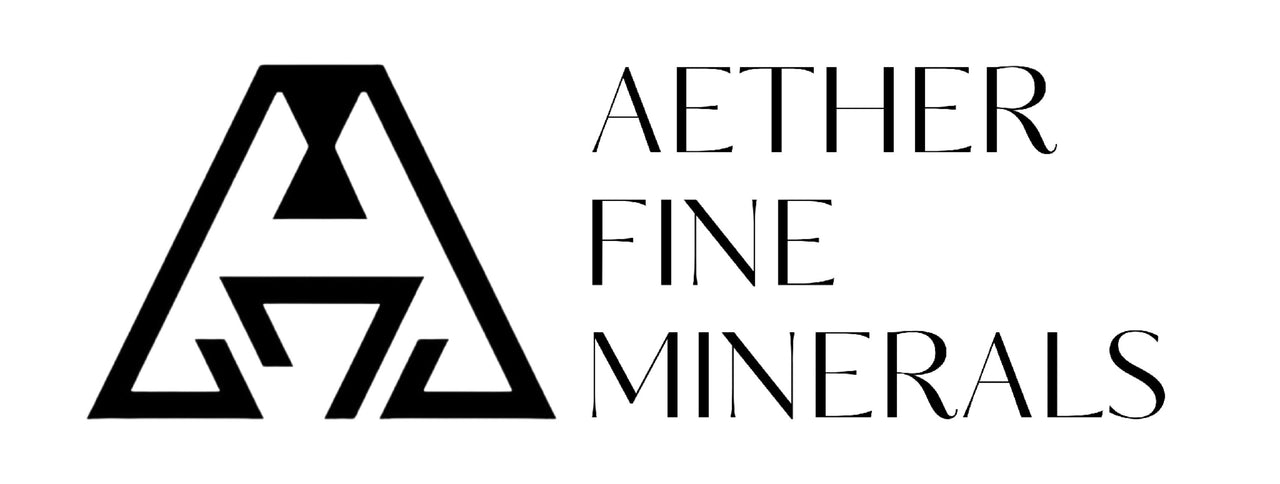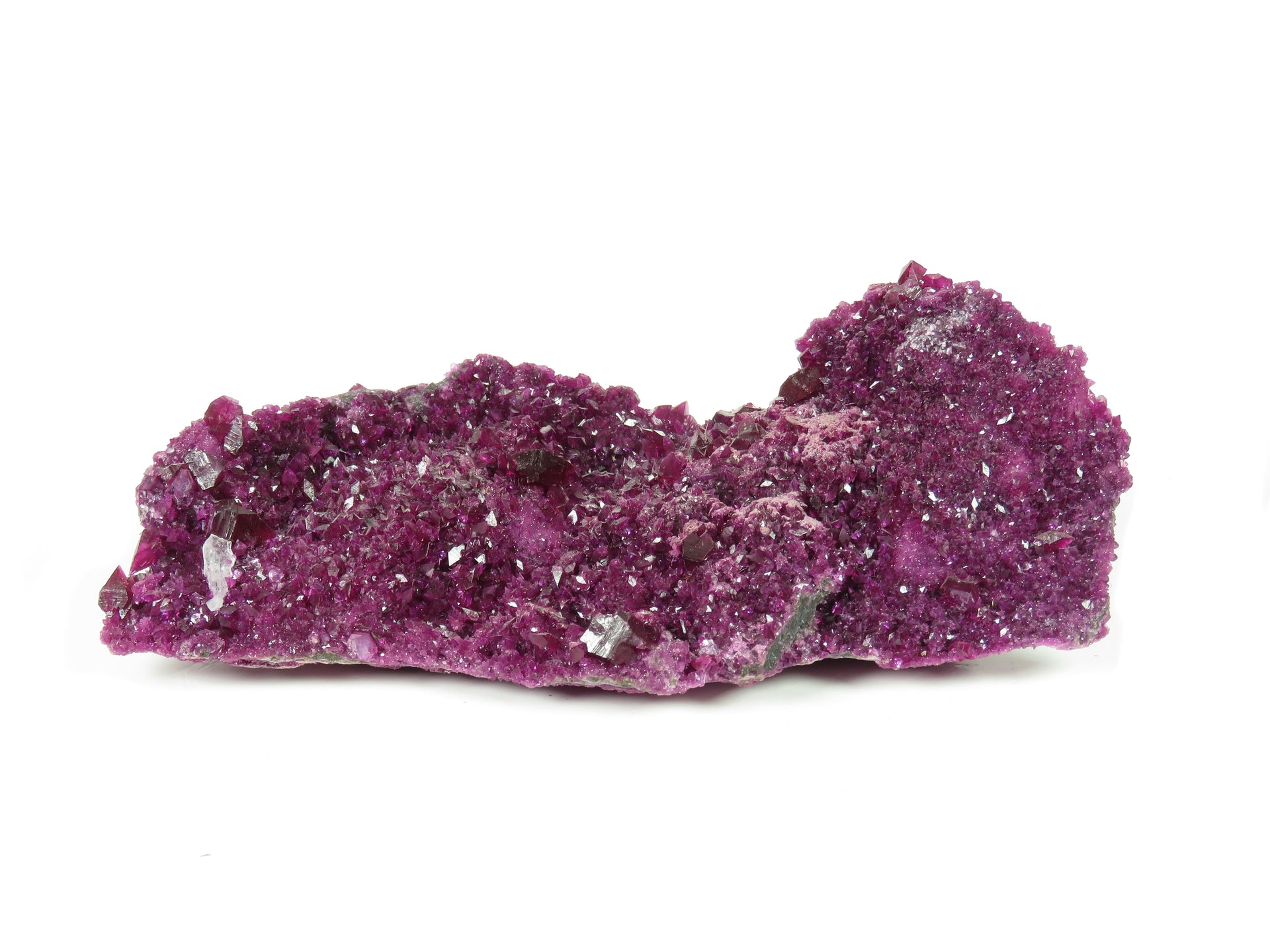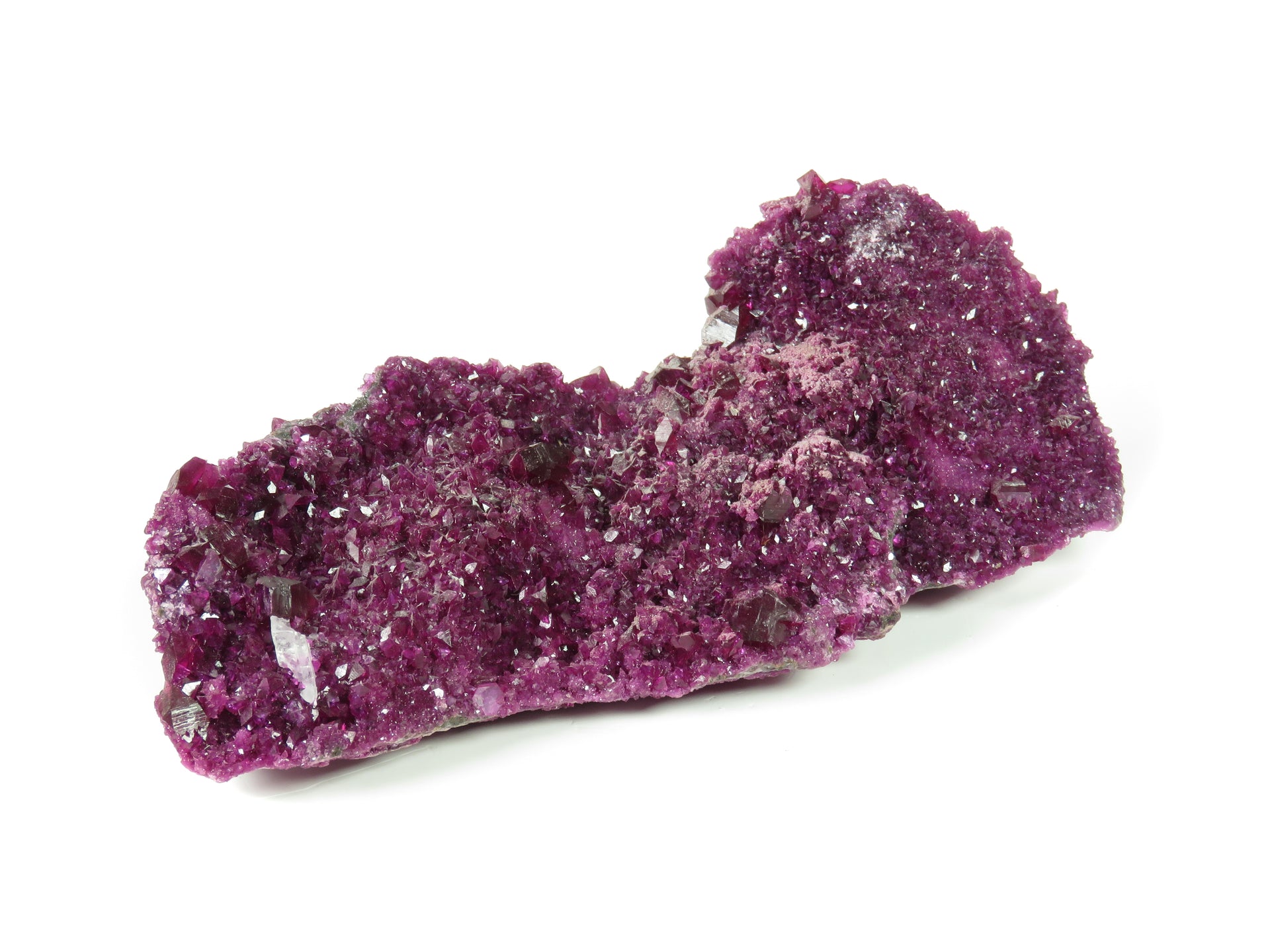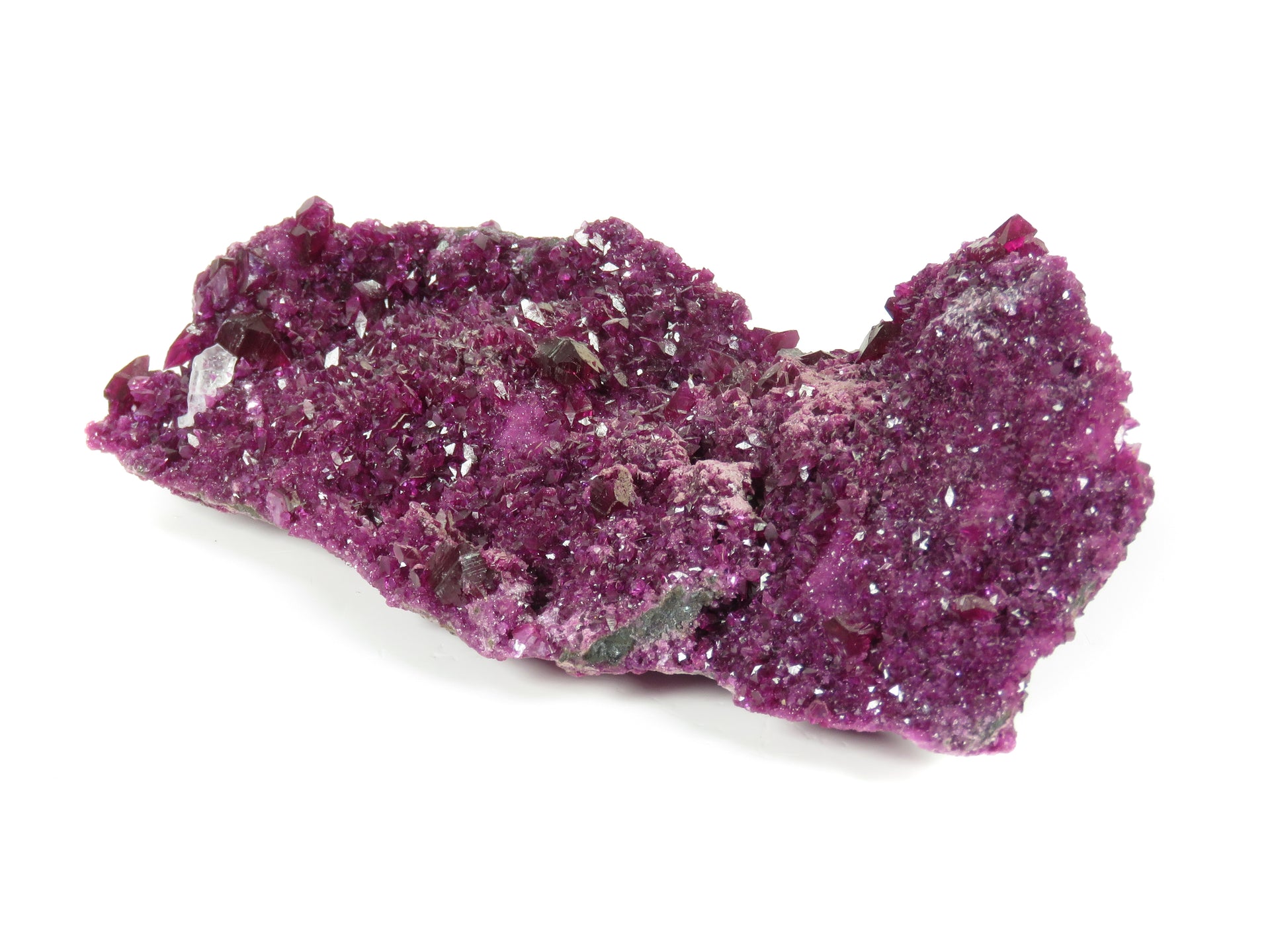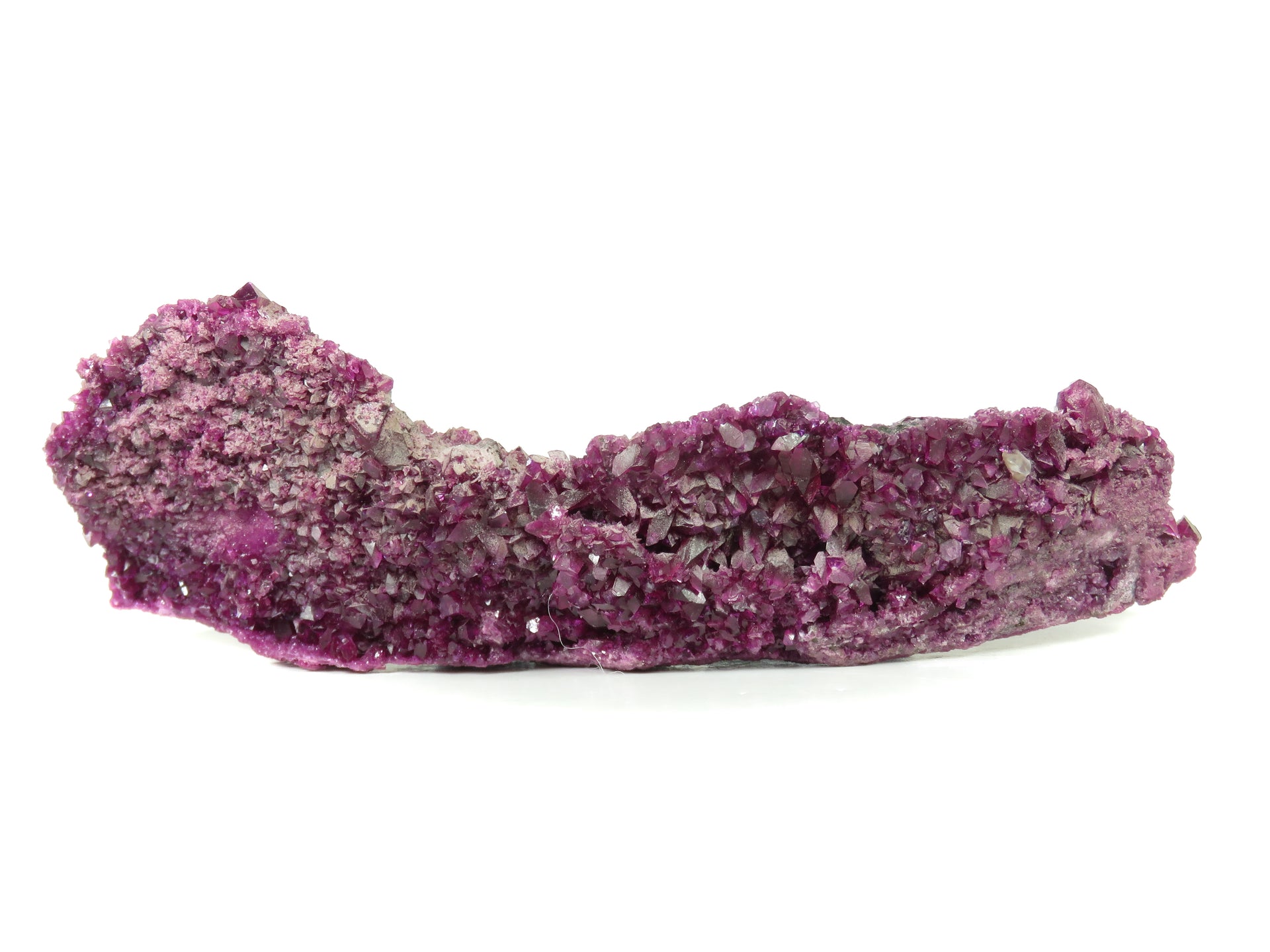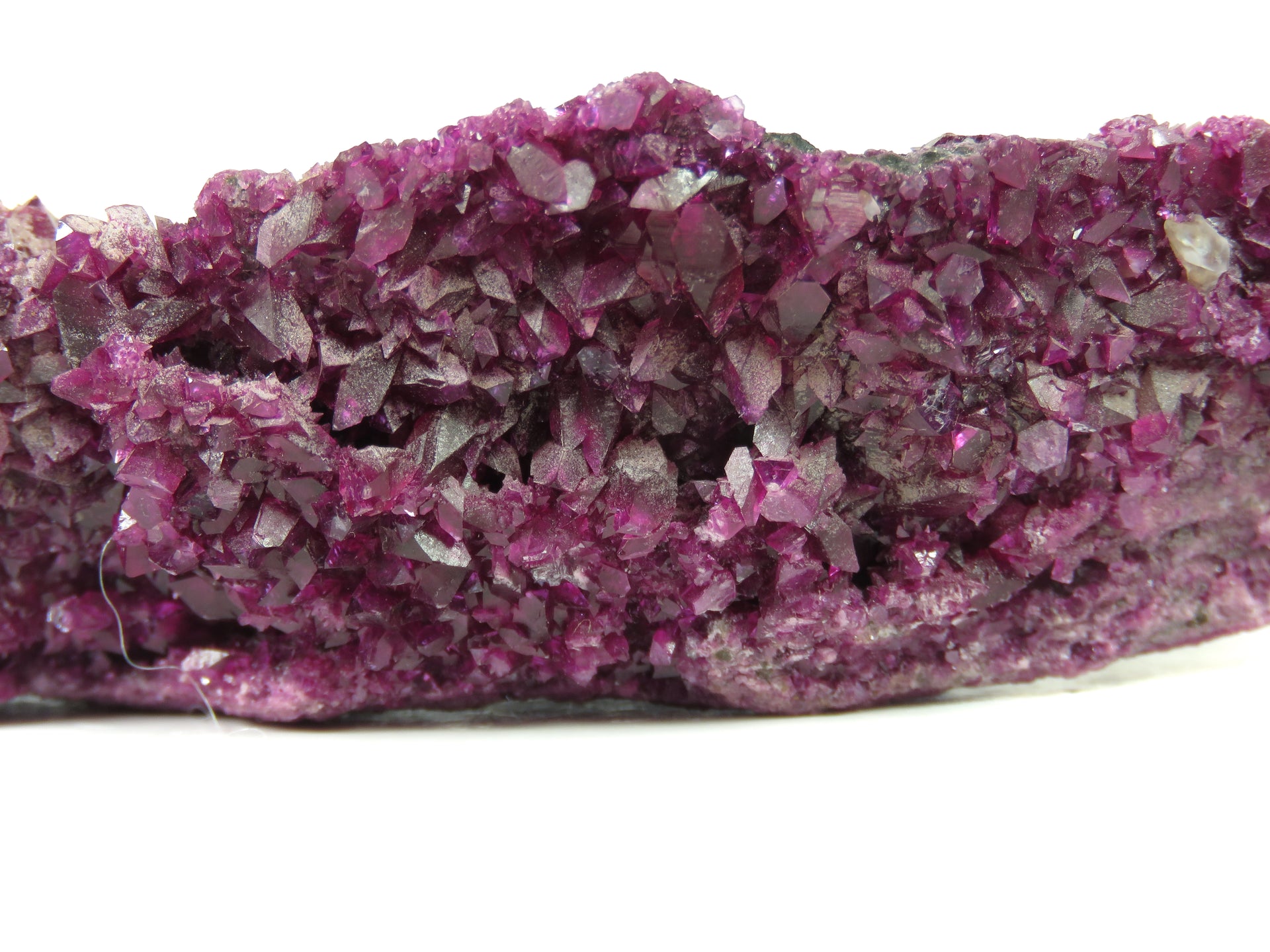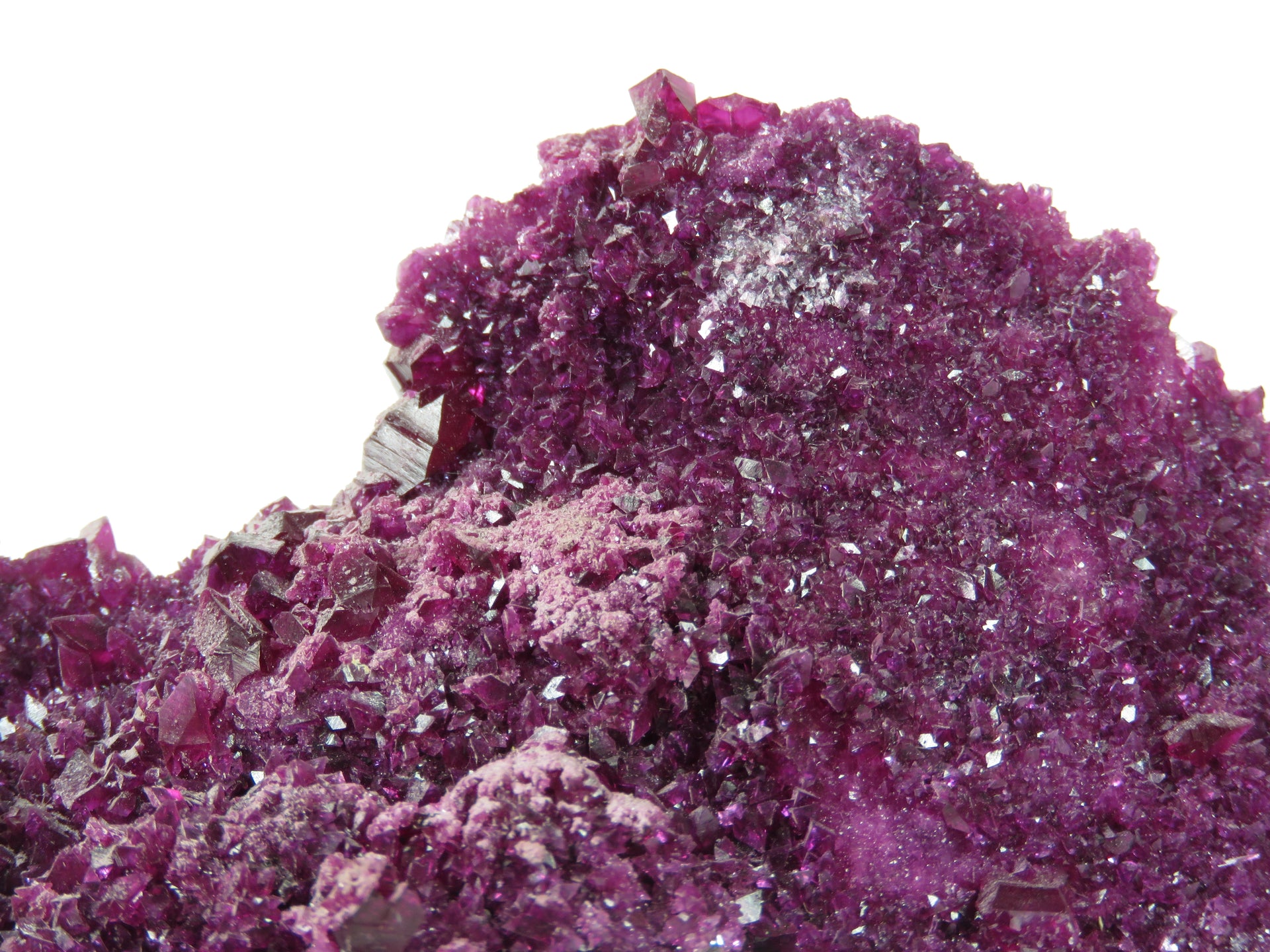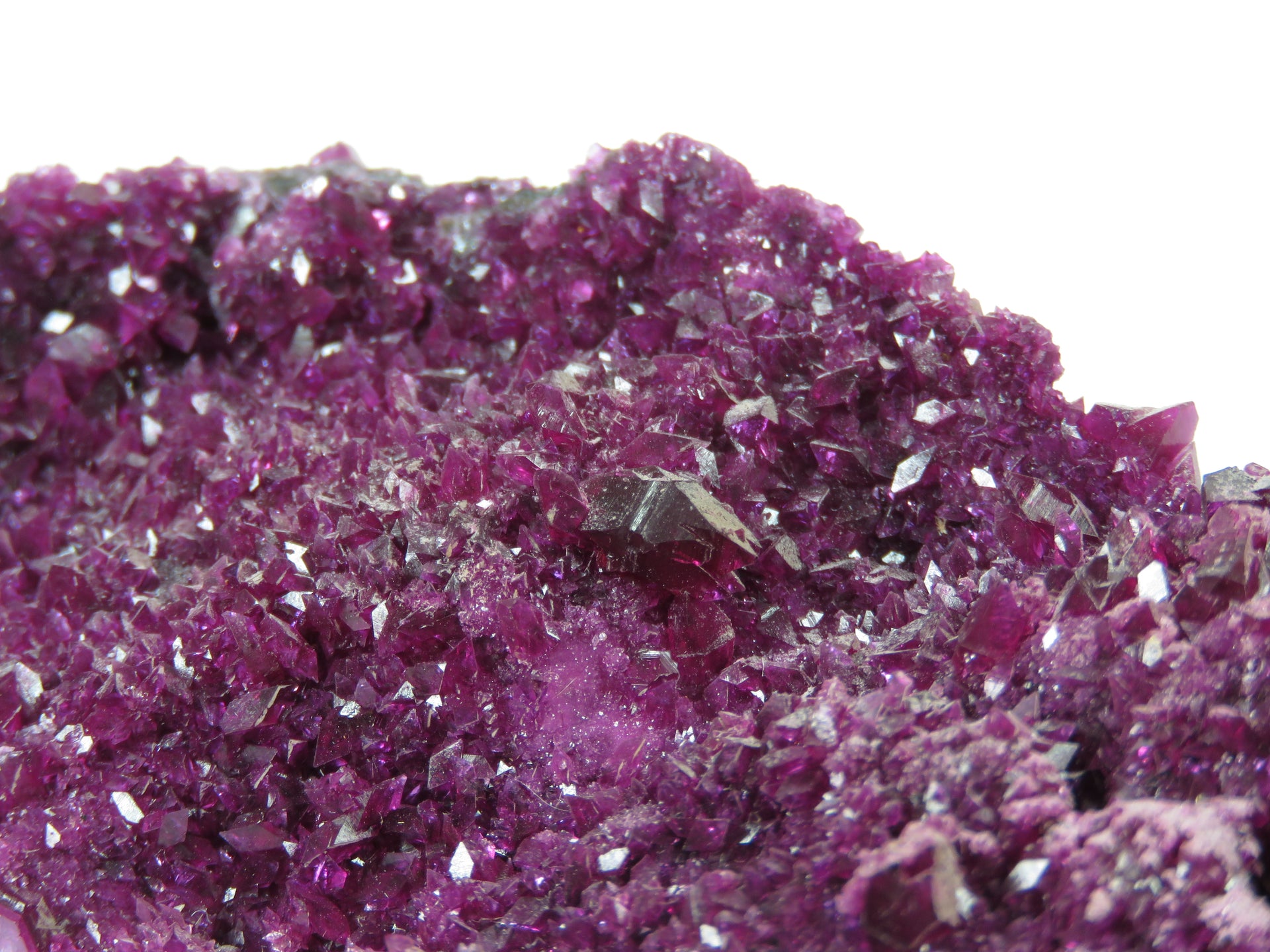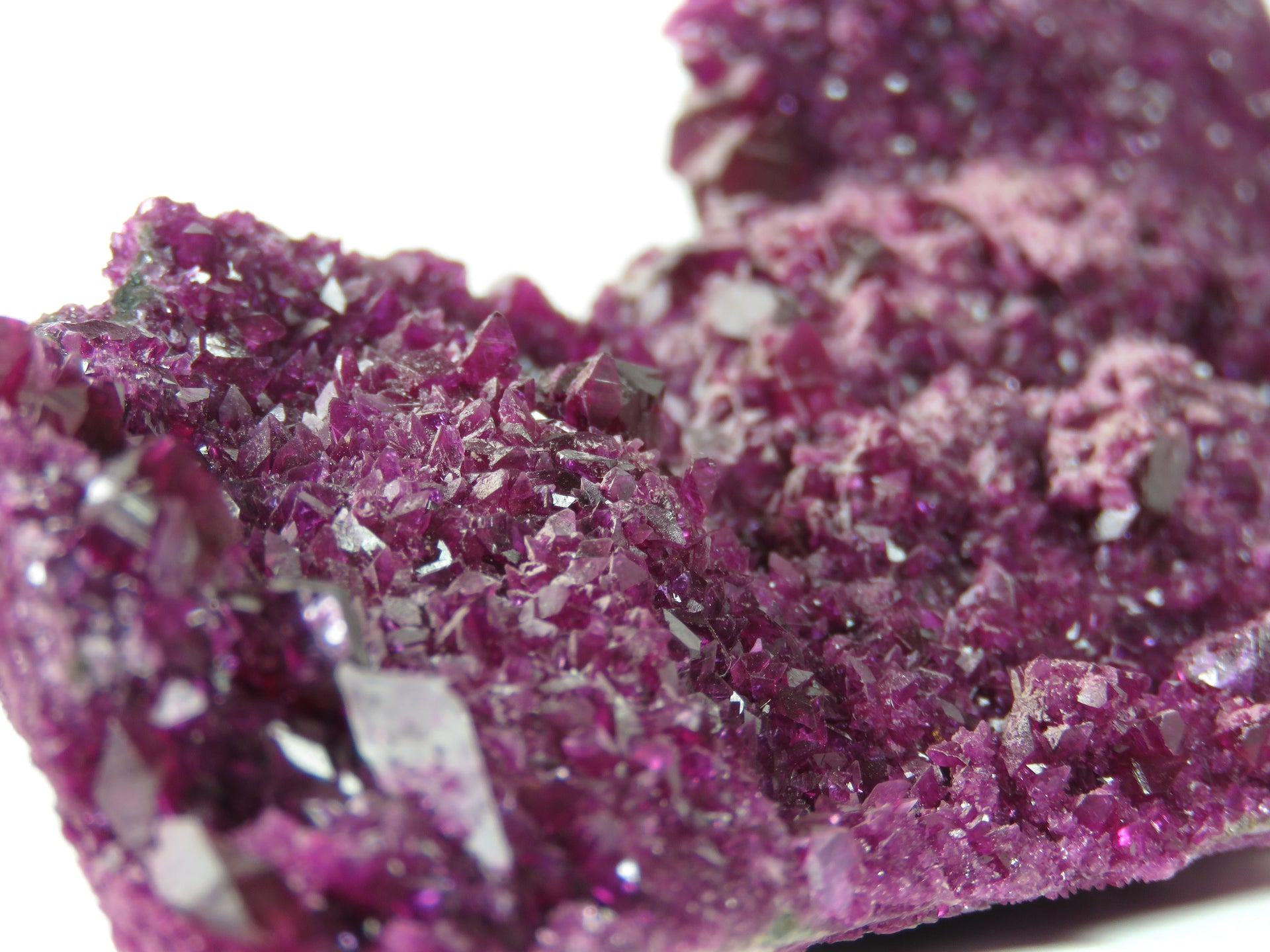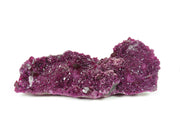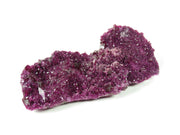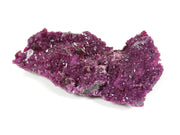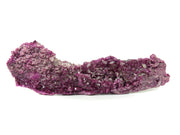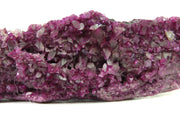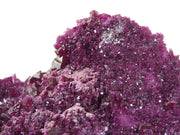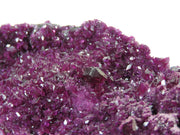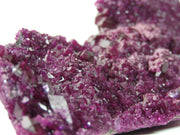CLINOCHLORE VAR. KÄMMERERITE
Only one locality ever produced this caliber of chrome-bearing clinochlore (known among collectors as kämmererite), and it’s the Kop Krom Mine in the Eastern Anatolia region of Turkey. This is a remarkably fine and important sample, with a visual quality hardly matched… all sides are almost completely crystallized (even the bottom!) and the color is the most vibrant that one finds from here, ranging from hot-pink to magenta to mauve in incandescent light. What I'd consider the front consists mostly of a smaller druze highlighted with crystals up to 7mm, and the backside has less druze and a lot more larger crystals, almost more impressive than the front. These pieces all came out in the late 70's and early 80's, thus it's rare to find any of them, let alone one of this quality. It pops out in a cabinet display in a way that's hard to be beat by any specimen, not just another of this species!
